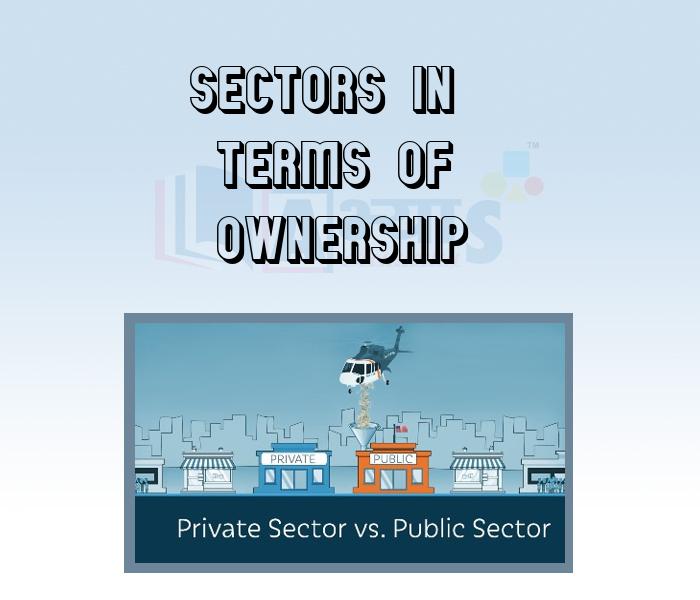Sectors in terms of Ownership











Sectors in terms of Ownership
Sectors In Terms Of Ownership: The economic activities can also be classified on the basis of ownership which means who owns the assets, and who is responsible for delivery of services. On the basis of ownership there are two sectors of the economy i.e. Public sector and Private sector.
Public and Private Sectors : In the public sector, government owns most of the assets and provides all the services therefore it is also called state sector or government sector. In the private sector, ownership of assets and delivery of services lie in the hands of individuals or private companies.
Both these sectors are involved in major activities of the economy, except some activities. All spheres of activities are open to either of them.
However, the public sector predominates in certain areas like mining, power generation, transport, healthcare, education etc, which belong to the infrastructure development or core activities.
The private sector predominates in agricultural and allied activities, manufacturing industries, manufacturing of goods, trade, hotel etc. Both sectors are seen in almost all fields.
Examples of private sector entities are Hindustan Unilever, Bajaj Auto, Tata Iron and Steel Company Limited (TISCO), Indian Hotels Company Limited etc.
Examples of public sector organisations are Indian Railways, Fertiliser Corporation of India Limited, Bharat Heavy Electricals Limited etc.
Profit Motives of Various Sectors: Private sector activities are centered around profit motives and service is of secondary importance. Public sector activities are determined by consideration of social welfare and providing basic amenities for the people. Here, profit motives are of secondary importance.
Role of Government's Investment :-Infrastructure comprises development of transport, power, communication etc. Expenditure on development of infrastructure is known as social overhead cost. Developing infrastructure require huge money that private sector cannot do. So government have to undertake heavy spending.
Following are the work done by government sector
Other activities which are primary responsibility of the government include:-
Students / Parents Reviews [10]
My experience with Abhyas is very good. I have learnt many things here like vedic maths and reasoning also. Teachers here first take our doubts and then there are assignments to verify our weak points.

Shivam Rana
7thIt was a good experience with Abhyas Academy. I even faced problems in starting but slowly and steadily overcomed. Especially reasoning classes helped me a lot.

Cheshta
10thI have spent a wonderful time in Abhyas academy. It has made my reasoning more apt, English more stronger and Maths an interesting subject for me. It has given me a habbit of self studying

Yatharthi Sharma
10thIt has a great methodology. Students here can get analysis to their test quickly.We can learn easily through PPTs and the testing methods are good. We know that where we have to practice

Barkha Arora
10thA marvelous experience with Abhyas. I am glad to share that my ward has achieved more than enough at the Ambala ABHYAS centre. Years have passed on and more and more he has gained. May the centre flourish and develop day by day by the grace of God.

Archit Segal
7thAbhyas is a complete education Institute. Here extreme care is taken by teacher with the help of regular exam. Extra classes also conducted by the institute, if the student is weak.

Om Umang
10thMy experience with Abhyas academy is very good. I did not think that my every subject coming here will be so strong. The main thing is that the online tests had made me learn here more things.

Hiya Gupta
8thAbout Abhyas metholodology the teachers are very nice and hardworking toward students.The Centre Head Mrs Anu Sethi is also a brilliant teacher.Abhyas has taught me how to overcome problems and has always taken my doubts and suppoeted me.

Shreya Shrivastava
8thIt was good as the experience because as we had come here we had been improved in a such envirnment created here.Extra is taught which is beneficial for future.

Eshan Arora
8thMy experience was very good with Abhyas academy. I am studying here from 6th class and I am satisfied by its results in my life. I improved a lot here ahead of school syllabus.
